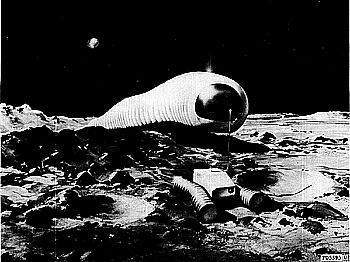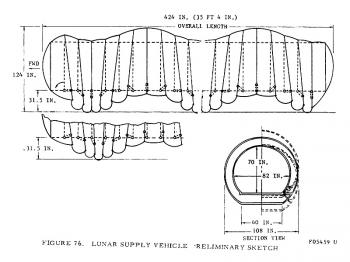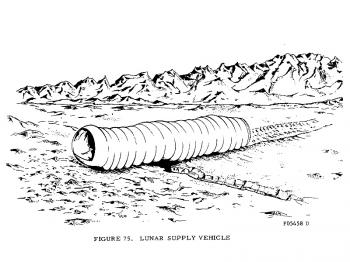The Lunar Worm…a truly unique proposal! No, this isn’t about a three-eyed worm from the cartoon “Lunar Jim,” but a space rover project that never materialized, presented by the Aeronutronic division of the Philco Corporation.
Inspired by the undulating movement of certain snakes, the Lunar Worm project seemed promising. It was presented to NASA in 1966, and it was studied as a possible means of mobility in a low-gravity environment such as the moon.
But the Lunar Worm was not to be; the project was never approved, but its advantages were obvious: with a contracting movement, a great cylindrical-shaped vehicle would be able to inch its way around in the most difficult terrain, and at a considerable speed (5 mph). This ingenious design could overcome challenging geographical (or lunargraphical) obstacles that would stop more conventional vehicles in its tracks.
Furthermore, the internal space inside such a craft would allow for more room. One model proposed a Lunar Worm that could carry scientific equipment and two crew members, and also act as an appropriately pressurized, temporary dwelling. Another slower-moving but larger version described a mobile shelter that could house a group of astronauts for up to a year.
There were also plans for a similar unmanned design for exploratory purposes.
The Lunar Worm was to be an economical design as well. Power requirements for this rib-walker were thought to be much less than other vehicles of a similar size.
Still, engineers met with some significant obstacles when designing a large, mechanical worm. According to the extensive and dedicated reports about the Lunar Worm, one of the major challenges of the proposal was the selection of a flexible membrane to seal the expandable bellows. This material would need to be capable of tolerating the friction, temperatures, and the continual erosion brought on by the environment.
The peristaltic vibrations of its waveform travel made it the perfect vehicle for soft soils, but at the same time it would produce a smooth voyage, without rebounds. Plus, it could be neatly folded up for easy shipping or storage. But despite its list of advantages—and decidedly whimsical shape—NASA decided not to go with the unusual design; the worm never won.
Although an actual vehicle never materialized, the calculations, diagrams and design ideas of the Lunar Worm still exist for posterity … or future inspiration.
To see the original proposal please visit: http://ntrs.nasa.gov/archive/nasa/casi.ntrs.nasa.gov/19660022562_1966022562.pdf











Friends Read Free